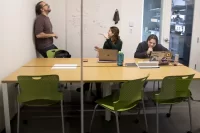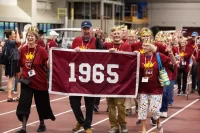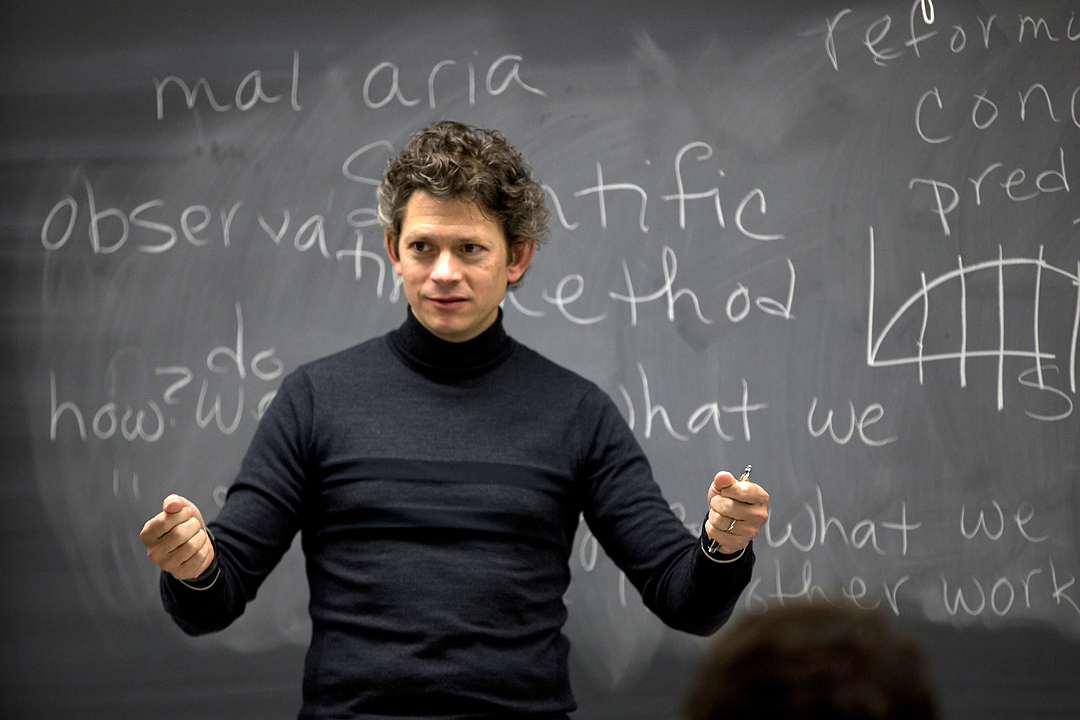
Ben Morse ‘24 arrived at Spring Point Marina in South Portland, Maine, on July 31 to work at his first tuna tournament where his task for the day “was like something out of a horror movie;” cutting the heads off tuna and digging through fish brains.
“Ready to get to work, Ben? This one is going to have a lot of blood in it!” boomed biologist Walt Golet with a laugh as he welcomed his undergraduate intern.
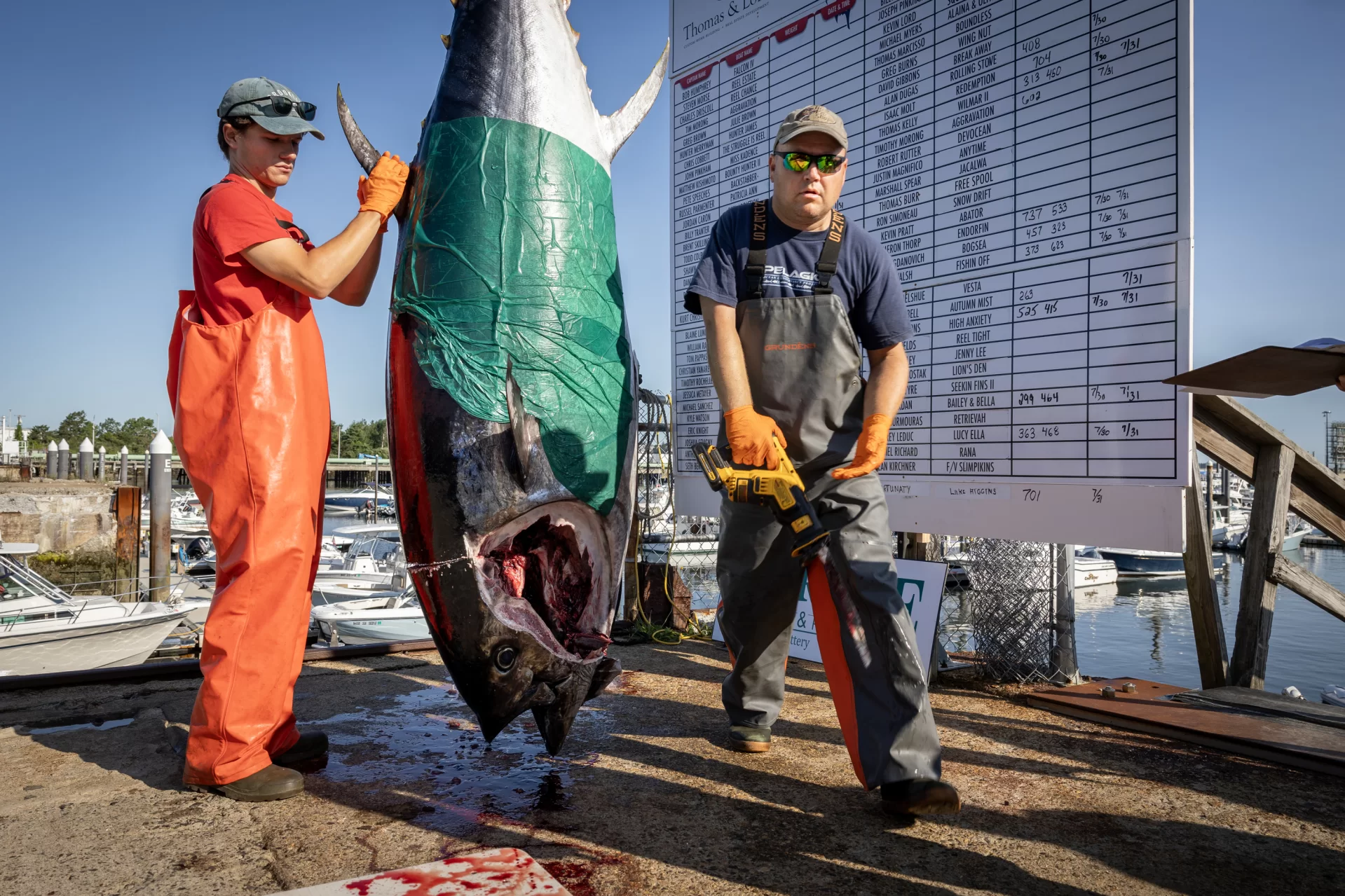
Morse’s mission at the Casco Bay Bluefin Bonanza tuna tournament involved gore and guts, but the endgame was about collecting data for Golet’s laboratory at the University of Maine and the Gulf of Maine Research Institute in Portland.
By removing the otolith bone from tuna heads — a task that, it turns out, Morse is really good at — he helped provide key data used by biologists to assess the health of the tuna population in the northwest Atlantic, which, in turn, helps inform policy makers who manage the tuna fishery.
Scientists consider the small bone in a tuna’s ear something akin to the voyage data recorder on a ship because it provides a wealth of information, like the age of the fish and whether the fish was spawned in the western Atlantic or the Mediterranean Sea.
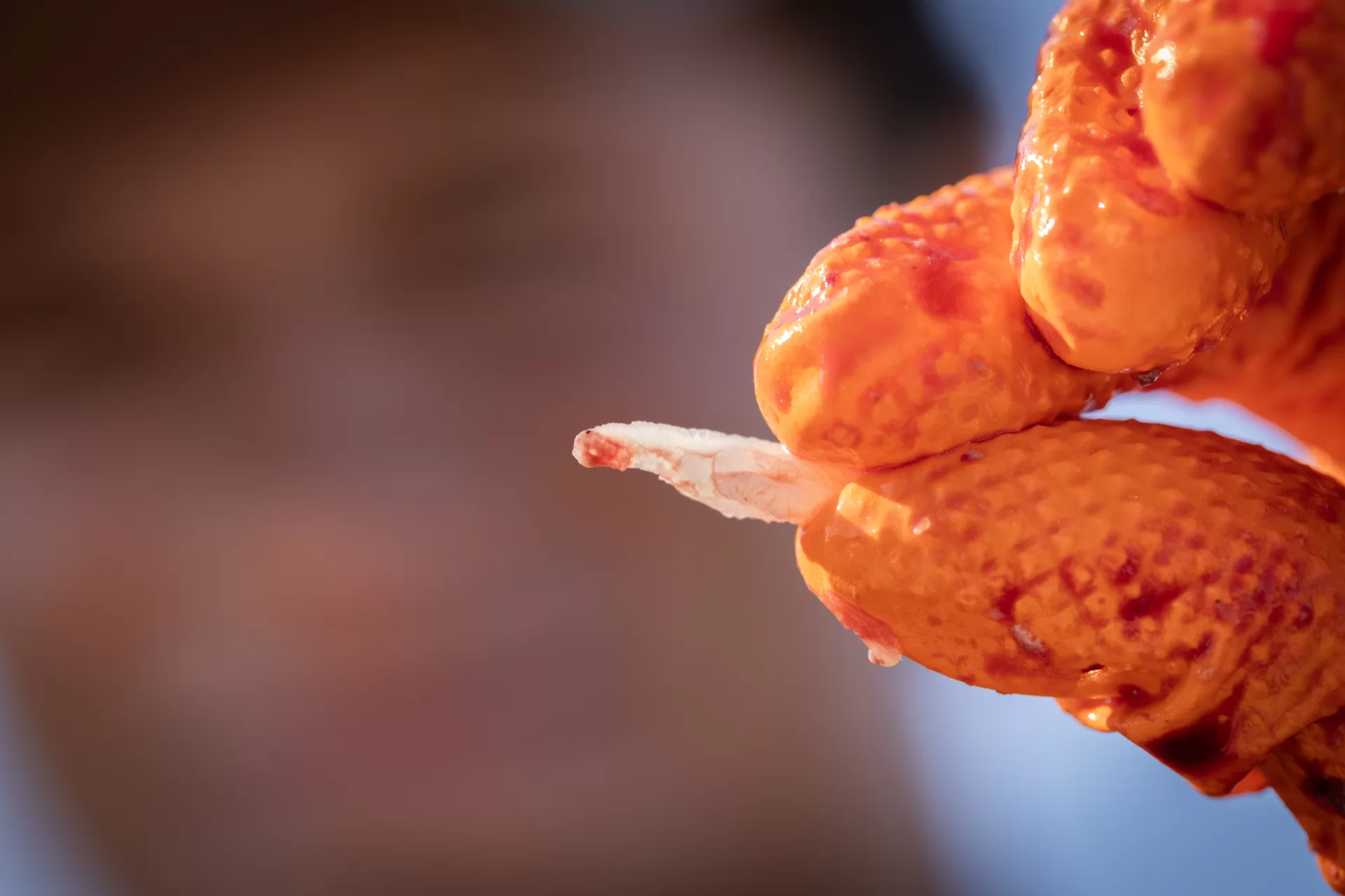
For Morse, a biology major with a pre-med focus, the experience this summer at his Purposeful Work internship provided a more holistic understanding of the connectivity between the environment and human health.
“A concept from a European public health class I took in the Netherlands during a semester abroad really resonated with me, where it focused on humans as a species that really rely on other species and the environment.”
Ben Morse
“A concept from a European public health class I took in the Netherlands during a semester abroad really resonated with me, where it focused on humans as a species that really rely on other species and the environment,” said Morse of Sunderland, Mass. “I think now more than ever we realize our own health is connected to the health of the environment.”
This summer, Morse worked alongside two doctoral candidates from the University of Maine gathering data for Golet, an assistant professor at the University of Maine’s School of Marine Sciences and the lead biologist at the UMaine Pelagic Fisheries Lab located at the Gulf of Maine Research Institute.
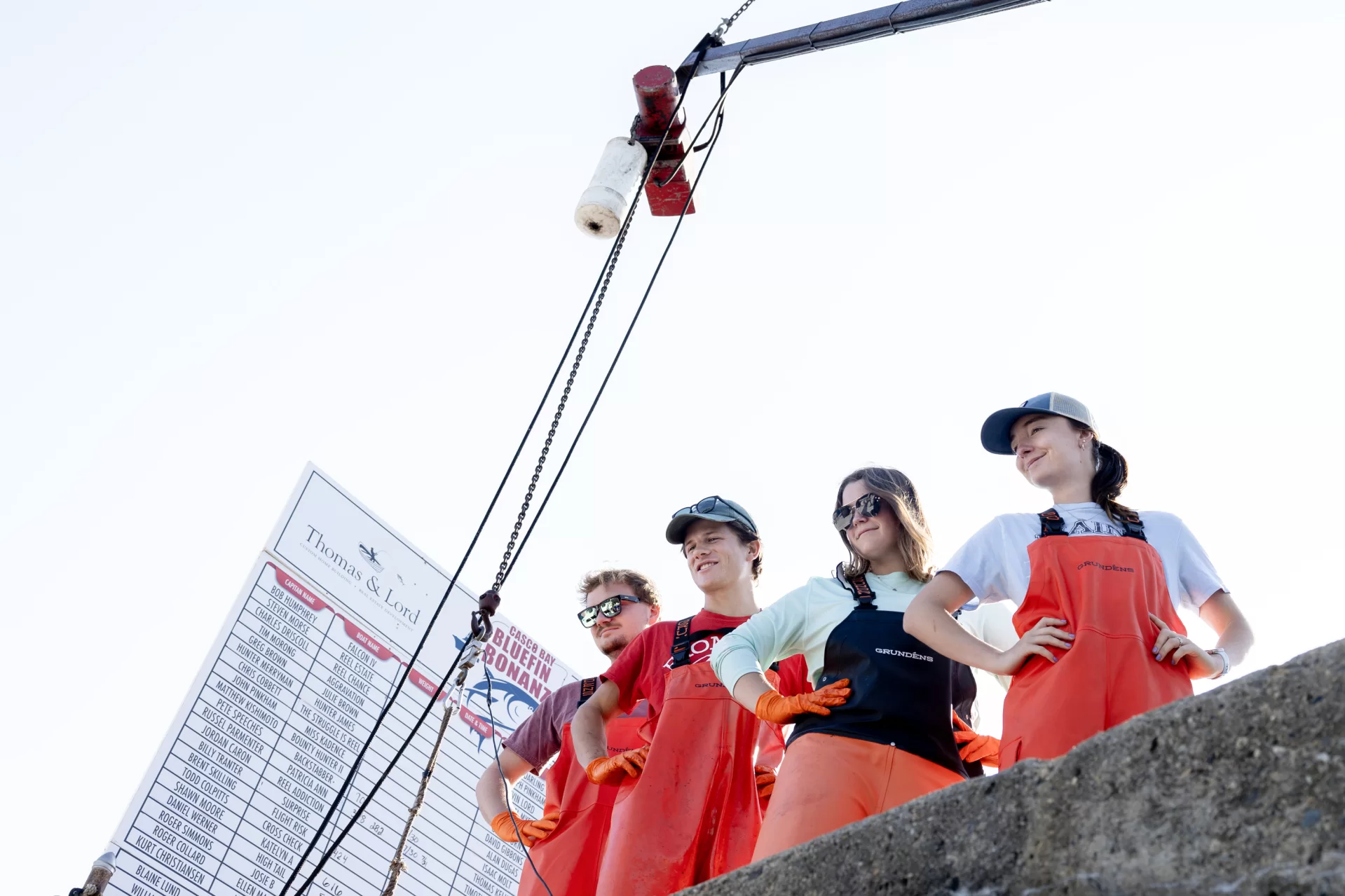
Each summer, Golet’s lab collects samples from tuna caught between North Carolina and Maine from commercial and recreational landings, including at several tuna tournaments throughout the northeast. Through a partnership with Bates, GMRI has offered Purposeful Work internships to Bates students since 2018. The GMRI internship program is competitive, receiving applications from coast to coast each year, according to Beverly Vari, who oversees Bates’ Purposeful Work internship program as the college’s associate director for employer engagement and internships.
Golet said every year Bates students come to the internship ready to, literally, roll up their sleeves, get splashed by blood, and get to work. This year, Morse was no different.
“They come in and get along with everyone in the lab; they are hard working; they’re interested; invested in the work; and they want to be here. They bring a kind of enthusiasm,” Golet gushed. “There is a big difference between sitting in a science class and being there in person with an 800-pound fish where you do all the measurements yourself and record the data. It’s actual data used the next time there is a bluefin assessment.”
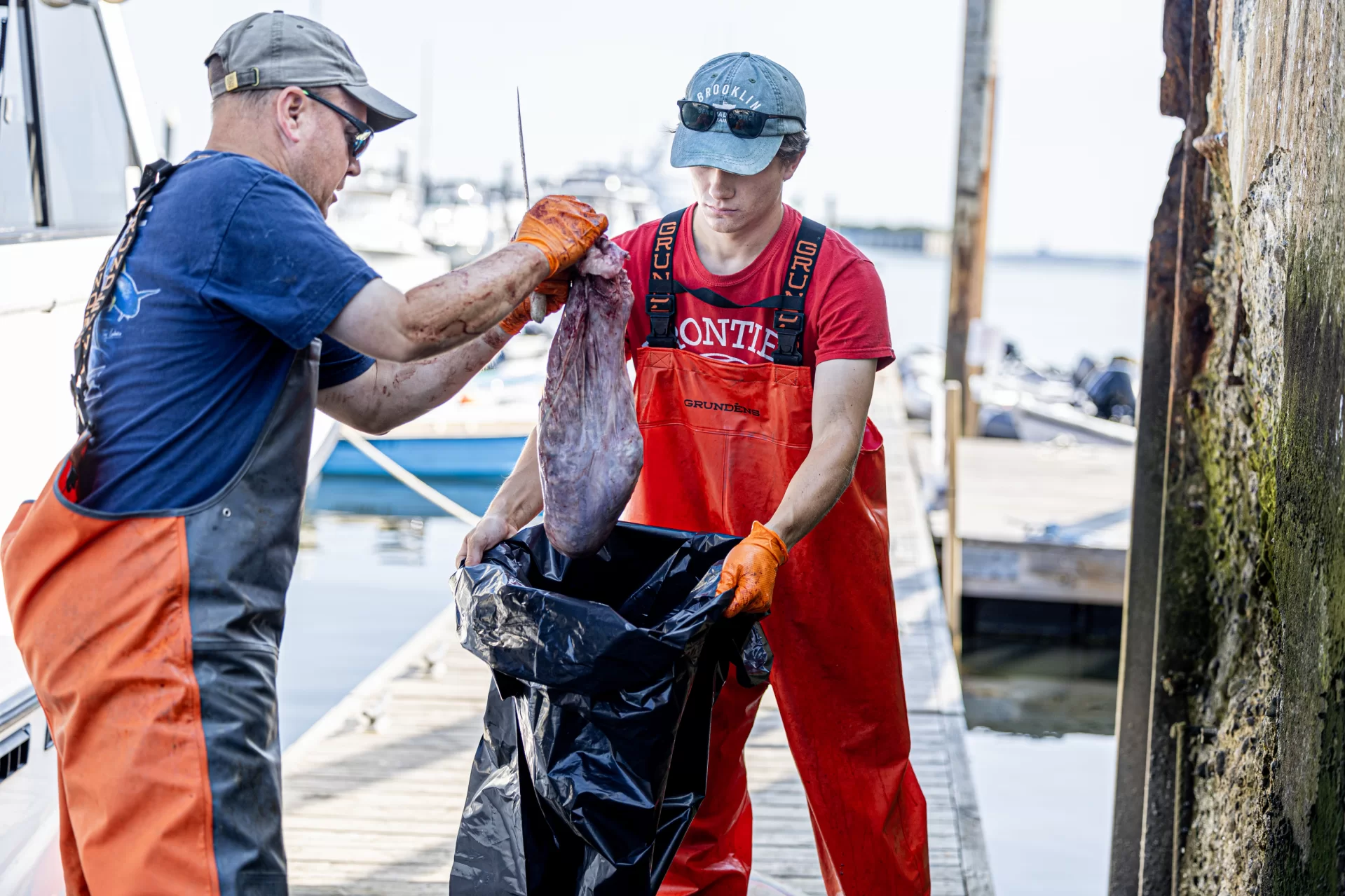
Between 4,000 and 6,000 bluefin tuna are harvested annually between North Carolina and Maine, according to GMRI. Last year, Golet’s lab processed around 1,500 Atlantic bluefin tuna to gather data that is used by the National Marine Fisheries Service and the International Commission for the Conservation of Atlantic Tunas, the regional fishery management organization that represents 52 countries in the management of highly migratory species in the Atlantic Ocean including bluefin tuna populations.
The data Golet’s team collects is used in the stock assessment process to set quotes based on the best available science.
Golet said the tuna population is doing well at the moment, and the size limit for commercially landed tuna in the northwest Atlantic by U.S. commercial fishermen — at 73 inches — is the largest minimum length in the world.
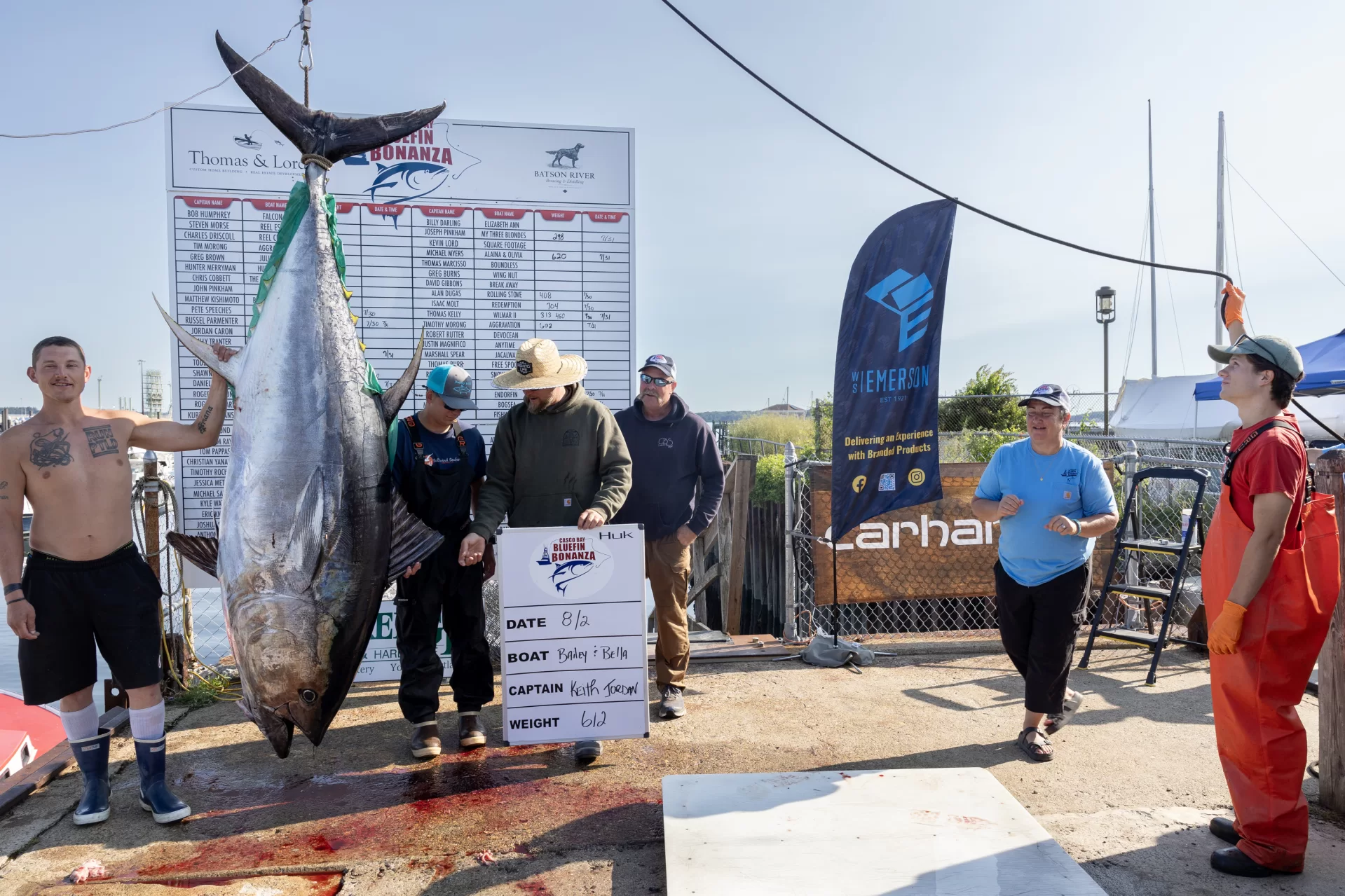
“All of those countries are in agreement that the east and west stocks are doing well enough to increase the fish catch,” Golet said. “Bluefin are coming back a little bit. It’s a conservation success story.”
A key to that success story is the otolith.
Just two months into his summer internship, Morse already had found and removed 30 otolith from tuna hauled in on fishing boats. At the Casco Bay tournament on July 31, he got to work on the six tuna that were waiting on boats lined up at the docks when he arrived at 8 a.m.
“Although it sounds gruesome, cutting the tuna head with a saw was the most fun,” Morse said. “The goal is to get the otolith out of the head, so you ignore the gruesome part. You have a mission and it’s easy to get lost in that mission.”
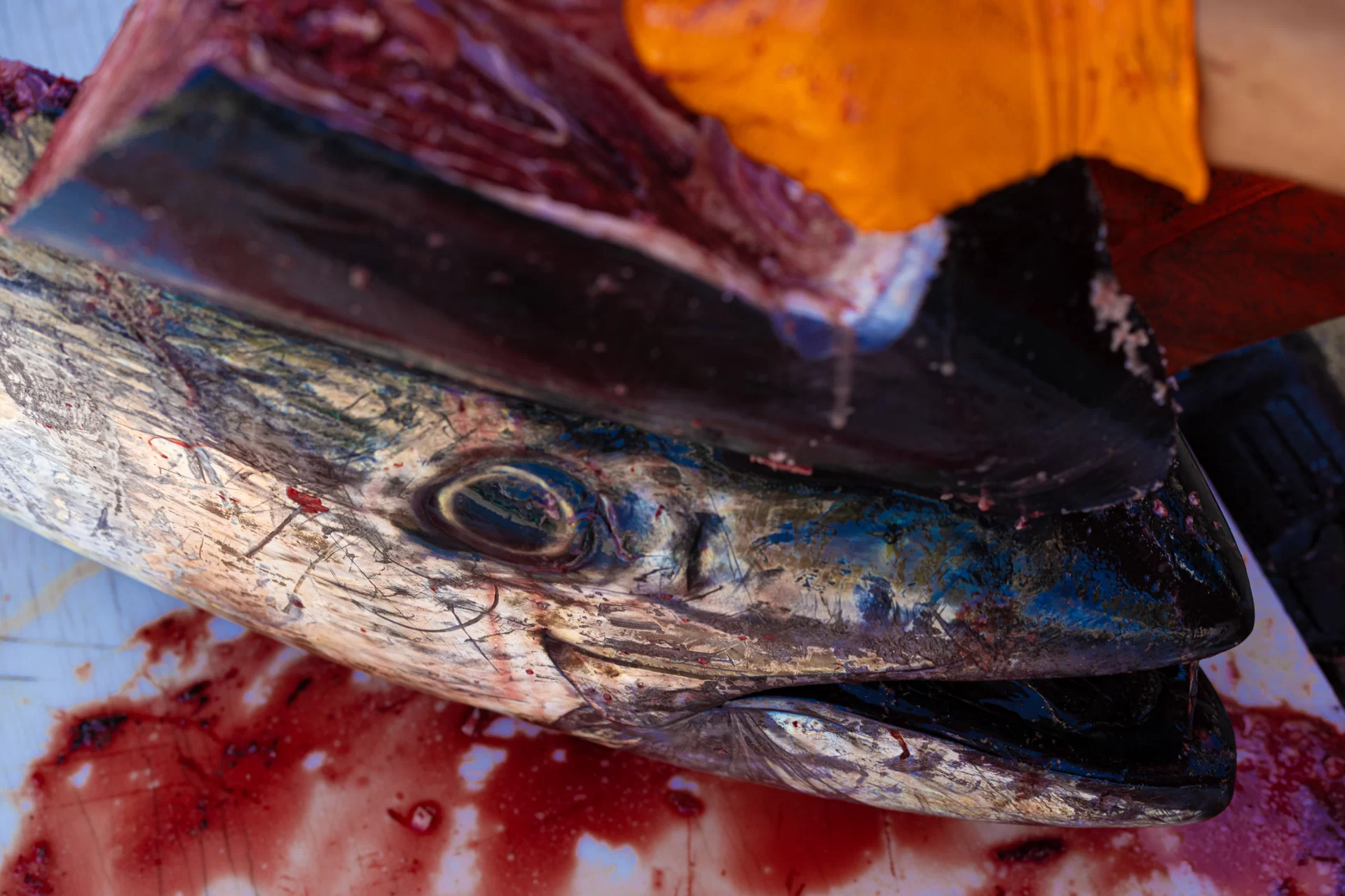
First Morse helped Golet measure a 600-pound tuna, then he held it as Golet used a power saw to cut off the head.
While the two worked, a crowd of spectators watched from outside a fence as tuna blood and innards dropped out of the hanging fish. For his part, Morse loved the public-education component of Golet’s work at the Bluefin Bonanza.
“The other tournaments don’t let us cut the fish up because they don’t want the kids to see. But the kids love it,” Morse said.
Moments later, Morse used an electric saw to cut into the head of a tuna. Then, using tweezers, he searched through a canal in the brain for the otolith. Yellowjackets swarmed him. But Morse worked on, unperturbed. He found his prize — the fragile ear bone — within minutes.
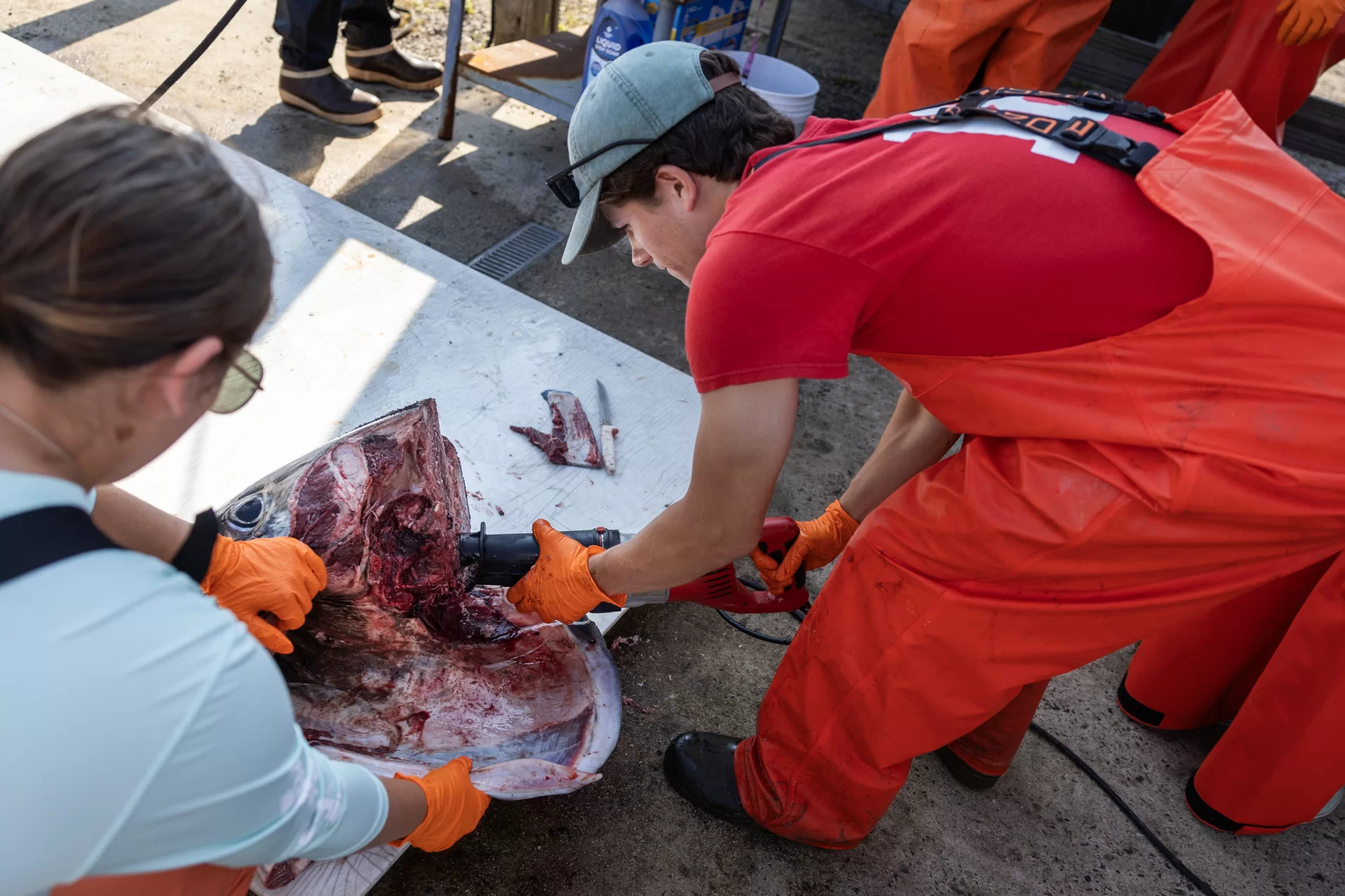
Even if he never participates in fisheries science again, Morse said the experience of being involved in research that will have a direct impact on public health was invaluable.
“You see how collaborative science is,” Morse said. “You’re part of the effort, even if you’re just an intern and not performing the chemistry. You’re an important part of the machine that, as Walt said, will inform (biologists) with more accurate data that will help to inform fishermen.”
